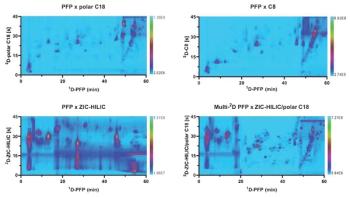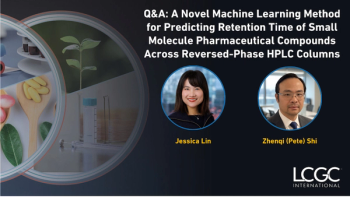
Best of the Week: Chromatographers vs Chromatography Users, Pollution, Cancer Drugs
Here are the top five articles that the editors of LCGC International published this week.
This week, LCGC International published a variety of articles on the hottest topics in chromatography and beyond. Below, we’ve highlighted some of the most popular articles, according to our readers. Happy reading!
Jonathan G. Shackman
In this edition of “The LCGC Blog,” Jonathan G. Shackman of Bristol Myers Squibb discusses the differences between chromatographers and chromatography users. As opposed to chromatography users, chromatographers usually show “a hunger for the technique that leads to a desire to understand fundamentals, applications, data analysis, and practical know-how.” Further, it discusses how one can pursue the title of a chromatographer and what the future can be for the next generation of chromatographers.
Will Wetzel
The Forensic Analytical Chemistry & Odor Profiling Laboratory at Texas Tech University is focused on developing new analytical instrumentation to characterize and profile odors from a range of specimens. Led by Paola A. Tiedemann, her research focuses on bridging interdisciplinary areas such as chemistry, canine odor detection, and national security to address issues critical to effective intelligence and defense capabilities. In this installment of “Inside the Laboratory,” LCGC International sat down with Tiedemann to discuss her research group and their current research projects.
Will Wetzel
The Colorado River is one of the most important natural resources in the United States. In addition to helping form the Grand Canyon, it serves as a valuable resource to living organisms, providing water for drinking and irrigation and sustaining ecosystems. However, currently it is dealing with numerous challenges, including pollution, climate change, and a declining water table. As such, various Western states have prioritized coming up with solutions to the water supply issue. In this article, the potential ways chromatography could help solve this crisis are addressed.
Aaron Acevedo
Colorectal cancer (CRC) is one of the most common malignant cancers in the world. Current CRC treatments rely on surgical removal, local treatment, and chemotherapy. However, approximately 50% of patients will develop metastases, where cancer cells spread from the place they first formed to another part of the body. CRC is resistant to traditional chemotherapeutic drugs that can be used for metastatic CRC treatment; as such, additional treatment options must be found for metastatic CRC. In a recent study out of China Pharmaceutical University in Nanjing, China, a new liquid chromatography-tandem mass spectrometry (LC–MS/MS)-based method was created to help determine the presence of anti-CRC drugs in human plasma.
Will Wetzel
According to U.S. Census Bureau estimates, 8.2 million Americans moved in 2022, compared to 7.9 million in 2021. For faculty members at American university laboratories, moving can be essential to one’s career growth. That said, difficult decisions can impact the decision on whether or not to move. Professional opportunities, family considerations, and personal preferences all play a role in the process; however, there are also laboratory elements to consider, such as organizing the transport of laboratory equipment and samples. Here, we discuss how this process can work, taking firsthand accounts from scientists who have gone through this process.
Newsletter
Join the global community of analytical scientists who trust LCGC for insights on the latest techniques, trends, and expert solutions in chromatography.




